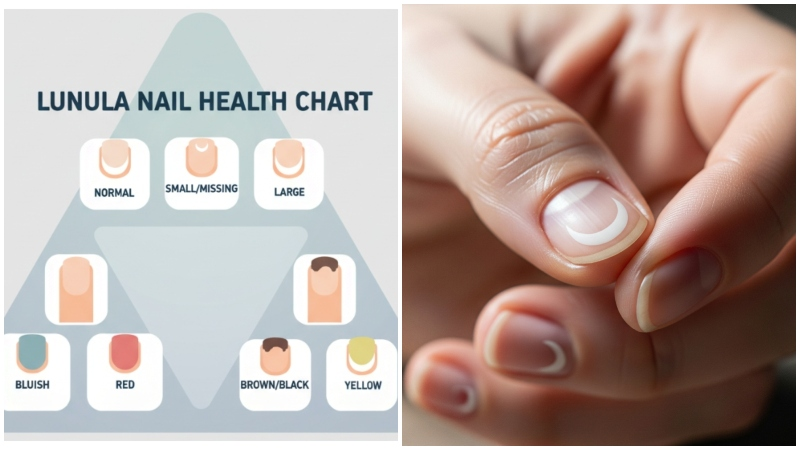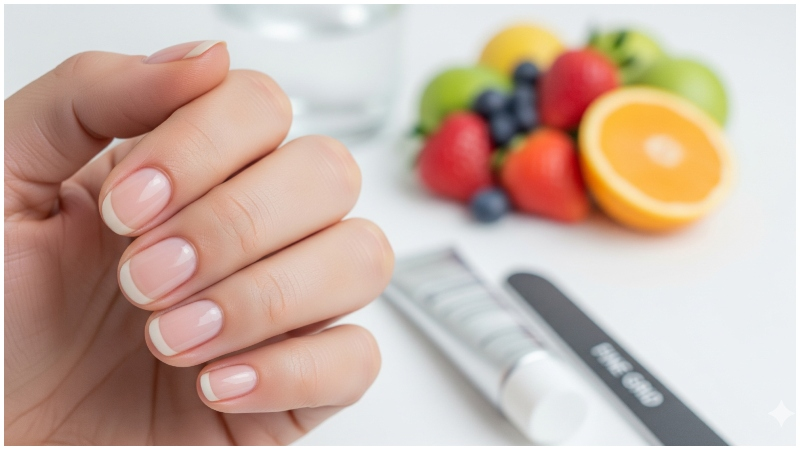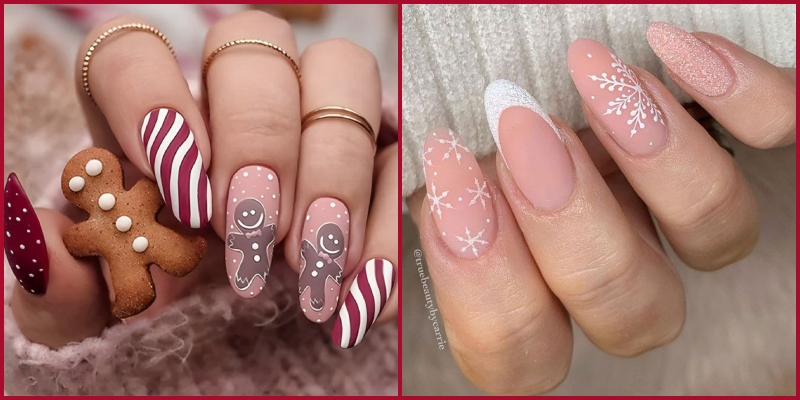Take a closer look at your nails. Do you see a small, half-moon shape at the base of them? That’s called the lunula, a tiny detail many people ignore, but one that has fascinated doctors, healers, and beauty experts for centuries.
The lunula isn’t just cosmetic. It’s part of your nail’s growth centre and, in some cases, its size, colour, or visibility can reflect changes happening inside your body. That’s why people search for a lunula nail health chart, a simple way to understand what these little “moons” might reveal about health and wellness.
In this article, we’ll give you the clearest explanation yet, no myths, no copy-paste information. Just science, clarity, and a few practical insights to help you understand your body better.
What is the Lunula?
The word lunula comes from the Latin word luna, meaning moon. It’s the whitish, crescent-shaped area at the base of your fingernails and toenails. What you see is the visible part of the nail matrix, the “factory” where new nail cells are produced.
- Most visible on thumbs
- Less obvious on smaller fingers and toes
- Visibility varies with age, skin tone, and cuticle thickness
Important point: Everyone has lunulae, even if they are hidden under the skin or cuticle.
Lunula Nail Health Chart
Here’s a simple chart showing what changes in the lunula may (or may not) mean:
| Lunula Appearance | Possible Indication | Notes |
| Normal white crescent | Healthy nail growth | No cause for concern |
| Large lunula (macrolunula) | May be linked to overactive thyroid, anaemia, or stress on the heart | Seek advice if a sudden change |
| Small or missing lunula (microlunula/anolunula) | Normal variation, or linked to anaemia, circulation issues, and malnutrition | Consider overall symptoms |
| Bluish lunula | Low oxygen levels, lung or heart conditions | Needs medical evaluation |
| Red lunula | Autoimmune disease, cardiovascular issues | Should be checked |
| Brown/Black lunula | Possible kidney disease, drug reaction, or melanoma (rare) | Urgent medical check |
| Yellow lunula | May indicate yellow nail syndrome or fungal infection | Often with other nail changes |

Myths vs Facts About Lunula Nail Health
Myth 1: If you don’t have visible lunulae, you’re unhealthy.
Fact: Many people have hidden lunulae due to genetics or cuticle coverage.
Myth 2: White spots on nails mean calcium deficiency.
Fact: Most white spots (leukonychia) are due to minor trauma, not lack of calcium.
Myth 3: Bigger lunulae mean stronger health.
Fact: Lunula size varies naturally; only sudden changes matter.
What Doctors Actually Look For?
While beauty guides often exaggerate lunula meanings, doctors consider them as supporting clues, not final diagnoses.
- Sudden disappearance of lunulae can suggest malnutrition or anaemia.
- Colour changes (blue, red, brown) may indicate systemic illness.
- Asymmetry (one hand very different from the other) can sometimes be a red flag.
Doctors never rely only on the lunula’s appearance. They combine it with symptoms, blood tests, and physical exams.
Lifestyle & Nail Care Tips for Healthy Lunulae
Even though lunulae alone don’t define health, healthy nails overall reflect good nutrition and care.
Nutrition for Strong Nails
- Protein-rich foods (eggs, beans, fish)
- Iron and B12 (leafy greens, meat, fortified cereals)
- Zinc & Biotin (nuts, seeds, whole grains)
Daily Care
- Keep nails clean and dry.
- Moisturise cuticles (don’t cut them aggressively)
- Limit harsh chemicals and polish removers.
When to See a Doctor?
- Lunulae suddenly change size, shape, or colour.
- Discolouration + fatigue, weight loss, or shortness of breath
- Black streaks or unexplained nail bleeding

Lunula and Holistic Health: What’s Missing From Other Guides
Most articles stop at listing “signs.” But here’s a bigger perspective people often miss:
- Circulation check: Cold hands + disappearing lunulae may indicate poor blood flow.
- Systemic clues: Lunulae changes + hair loss, brittle skin, or fatigue can point to thyroid or nutritional disorders.
- Age factor: Don’t panic if lunulae shrink with age; it’s often natural.
- Cultural differences: In Eastern medicine, lunulae are seen as energy markers. While not fully scientific, it shows how universal human curiosity about nails is.
Reflection
The lunula nail health chart is a fascinating tool, not a crystal ball. Your lunulae can offer hints about circulation, nutrition, and systemic health, but they are never the whole story.
Remember:
- Everyone has lunulae, visible or not.
- Normal variation is common.
- Sudden changes deserve medical attention.
By combining good nail care, a balanced diet, and awareness of body signals, you’ll not only support your nails but also your overall well-being. So, the next time someone asks you, “What do the half-moons on your nails mean?” you’ll know the answer: They’re a tiny but powerful reminder of the connection between beauty, health, and biology.
Have questions or feedback? For more updates, contact us anytime.

